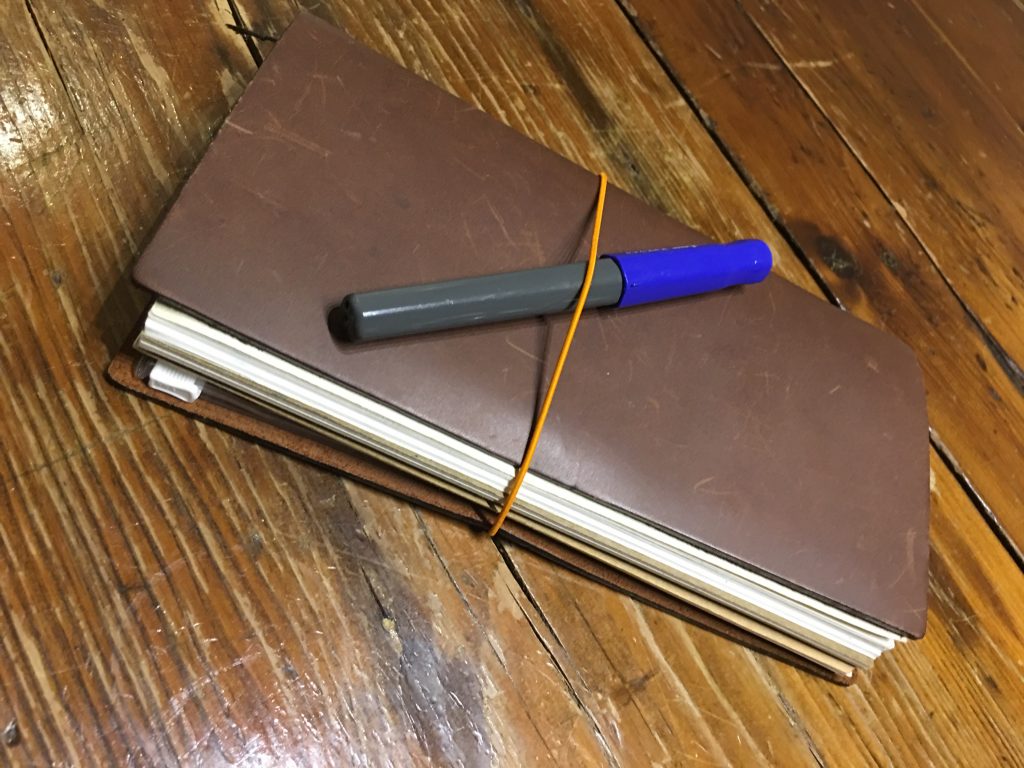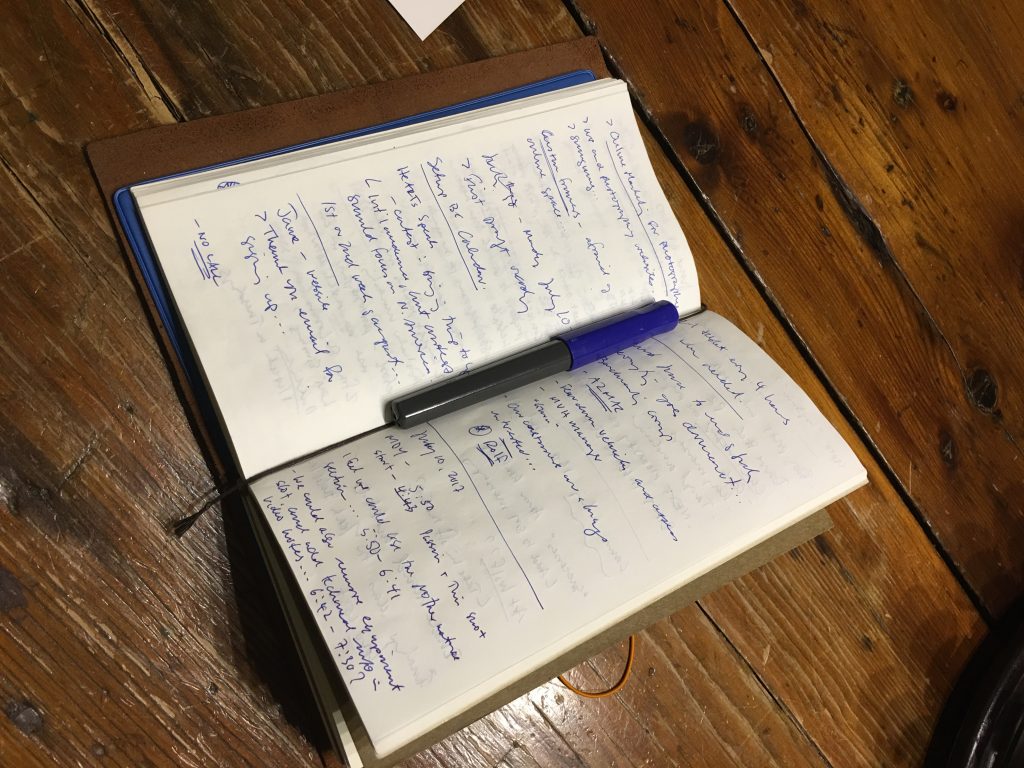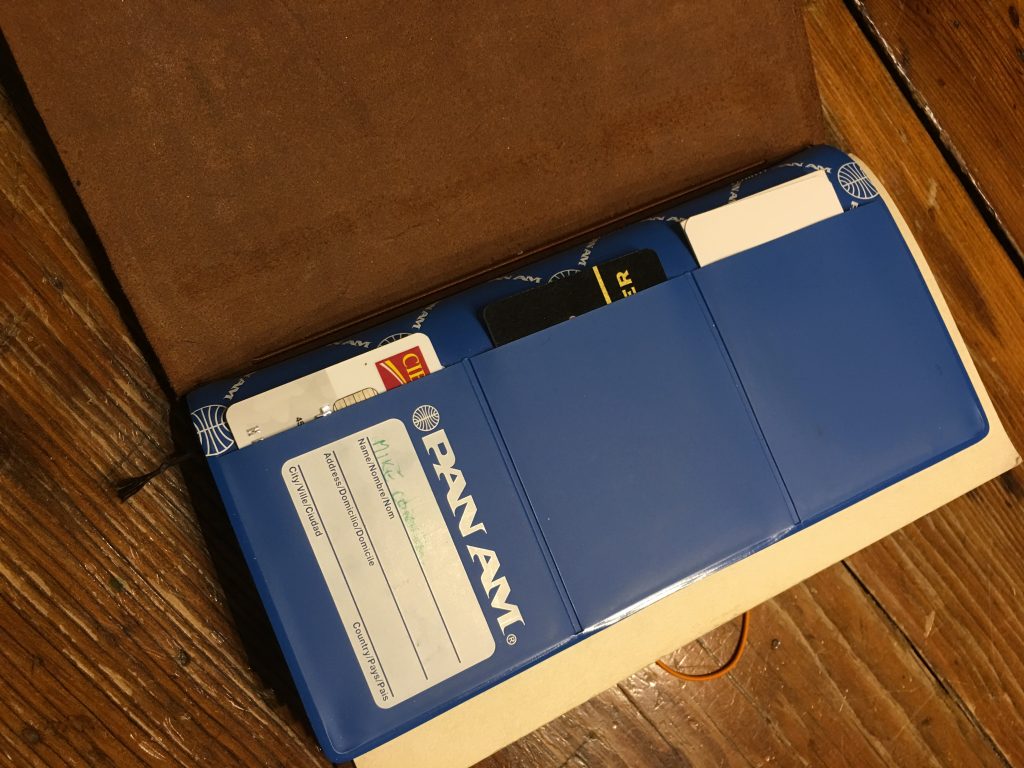 Gini Dietrich has her Bullet Journal.
Gini Dietrich has her Bullet Journal.
Laura Petrolino has her treadmill.
Corina Manea has her home office.
Everyone has their must-have tools that make them better at work, life… just better.
For me, it was always a notebook.
Well, not just any notebook. Finding the right one took years.
Leuchtturms. Moleskines. Rhodias. I’ve gone through hundreds of them.
It wasn’t until a year and a half ago that I came across the big winner.
The Traveler’s Notebook (aka The Traveler’s Company Notebook, the notebook previously known as MTN, or Midori Traveler’s Notebook).
What’s a Traveler’s Notebook, you ask, and why is it so amazing?
In short, it is a refillable notebook.

But really, at it’s core, it is simply a leather book-like cover that holds multiple notebooks or inserts with elastic bands.
Each elastic band can hold up to three notebooks.
Multiple notebooks. This is important. Take a note.
Paper Preference: It’s a Thing
One of the reasons I’ve gone through so many different notebooks is paper preference.
Some like blank, plain paper notebooks.
Others prefer graph paper, dot grid, ruled, or lined with a margin.
The mind boggles. Or at least mine did.
The notes I could take about the type of notebook paper in my notebook…
I was big into graph for a while, and still use it for more organized note-taking.
Dot grid seemed like I was just showing off.
Plain was just crazy, at first. Too much freedom. Not enough order.
The fact that I also write with a fountain pen—fountain pens, but that’s fodder for another post—made blank paper note taking difficult (read: Messy and illegible), until I found my fountain pen note-taking… legs? Fingers?
You can’t really go wrong with ruled paper.
But it wasn’t perfect and, who’s kidding who, it just seemed so pedestrian after graph.
With my Traveler’s Notebook, I eventually settled on three different notebooks, for three different forms of note taking, on three different types of paper.
Mike’s Traveler’s Notebook
Like the Bullet Journal, my Traveler’s Notebook is more of an organization and productivity system.

It’s not a notebook, per se, rather it’s the receptacle for a compilation of notes and styles of note-taking.
Plain Paper Notebook, Lightweight
These pages are thinner, so you get more of them.
One hundred and twenty-eight pages versus 64.
This notebook is for on-the-go, on-the-phone, meeting-style notes.
It’s a little wild west (hence the blank, plain paper and higher volume of pages), but it facilitates doodling, sketches, diagrams, messy notes and anything that isn’t meant to be structured and organized as soon as pen hits paper.
Story outlines will also find their start on the plain pages of this notebook if I’m still just coming up with ideas or the structure is still super loose (and yes, I swear they do advance from that stage).
This notebook is used in a pinch.
It’s used whenever anything needs to be written down.
Graph Paper Notebook
This is where most of the business happens.
It’s structured and systematic.
It’s where Wunderlist tasks go to be acknowledged and completed.
Strategies, story ideas (the more advanced and structured ones. No, really), to-do lists, Freedom Lists.
These notes have more meat to them.
They’re not more… real, but they do have more substance and, accordingly, need the order and structure afforded by graph paper notebook wherein they reside.
The freewheeling notes from the plain notebook get transcribed here and become part of the larger plan.
This is where they go to grow up.
In the plain notebook, they were just ideas jotted down.
Fleeting concepts captured quickly as a team member or client says something that needs to be recorded and remembered.
This notebook is used sparingly.
It’s where notes, ideas and plans go to become accountable.
Ruled Paper Notebook
I recently wrote about lifelong learning.
I am constantly accumulating knowledge and chronicling ideas.
All notes from courses I’m taking, notes from books I’m reading or listening to, great quotations from movies, ideas for books I want to write or am writing, and outlines for the books themselves.
These live in the ruled paper notebook, which is also used sparingly, depending on the courses I’m taking at the time, and how much writing I’m doing.
You can (and many do) add weekly or monthly planners into the Traveler’s Notebook mix, but I’ve shifted from analog to digital on that front.
Storage
Most traditional notebooks, such as Moleskines, have a pocket in the front or back to keep various items.
I have what they call a Kraft Paper Folder in the middle of my notebook, along with a Pan Am-branded zippered pocket insert (my Mum was a Pan Am stewardess back in the day, so it was a fun addition).
Receipts, loose notes, bills and such get stuffed in the folder, and business cards, travel documents, emergency cash and the like go in the Pan Am insert.

Adapt as Needed
One of the most important qualities of the Traveler’s Notebook and system is that it isn’t static.
My note-taking style improves (and regresses) and changes and I grow.
My notebook adapts with me. I can add a notebook, a calendar, an insert.
If elastics break, they can be replaced.
The leather improves with age, and it’s of a size that I can easily carry it around.
Pretty isn’t Important
I’m not a bullet journaler, although people do use Traveler’s Notebooks for bullet journaling.
I’m terrible at making things look pretty and fun.
But I’m a firm believer in the everything-has-its-place methodology.
A notebook for this, for that and for the other thing… it helps me maintain order and think systematically.
It’s not pretty. But it works.
It’s what helps me be good at what I do, and it makes me happy. It helps me be better.
Pretty good for a notebook.
What’s Your Idea?
Of course, everyone’s different and you have to find a notetaking method that works for you.
Here’s a post with advice from other bloggers on how they capture ideas.
And in case you feel you’re running low, here’s Gini Dietrich’s take on keeping the idea pipeline fresh and full.
How do you take notes or capture ideas? Share your comments below.